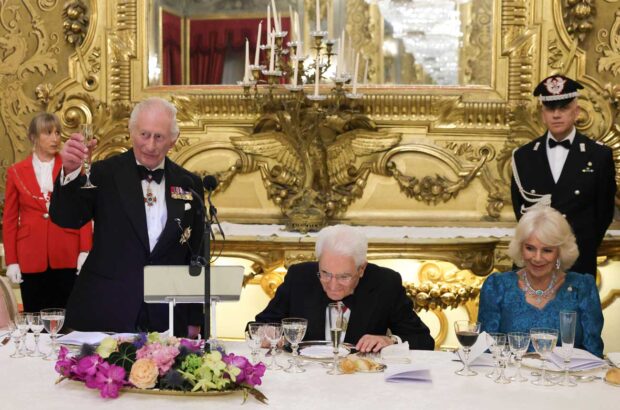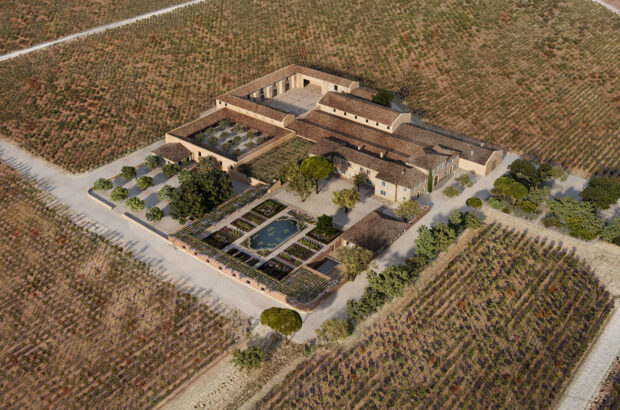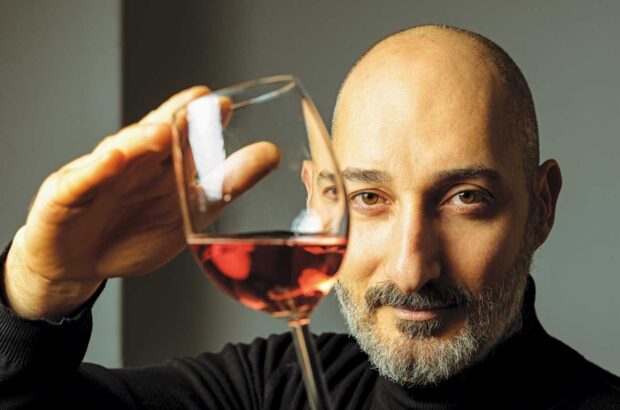Over the last 10 years Château Ausone has undergone major renovations and improvements. JAMES LAWTHER MW tastes the last decade's wines
There are cycles in the life of every great estate and at present the wheel of fortune is looking kindly on Château Ausone. One of just two St-Emilion premiers grands crus classés A (along with Cheval-Blanc), Ausone has not only produced some stunning wines in recent vintages but is also undergoing a massive programme of renovation. The figure behind the changes is Alain Vauthier, a man who appears equal to the task of increasing Ausone’s allure.
Château Ausone is one of the oldest, most famous properties in Bordeaux yet it is the most confidential of wines. This is due in no small part to the meagre size of the production – an average 2,000 cases per year – and the consequent lack of any attendant publicity. Those who taste the wines, though, will find an almost ageless quality. Reticent and reserved in youth, they can initially be difficult to judge but there is a freshness and elegance that persists with time, supplemented in recent vintages by a polished texture and aromatic complexity.
The key to Ausone lies in the site of the 7ha (hectares) vineyard, here the notion of terroir is uppermost. Facing east-southeast, the vineyard is protected from the cool, northerly winds by a ring of rocks. A quarter of the vineyard is on the shallow soils of the limestone plateau, the rest on the clay-limestone côtes. ‘Ausone has a fabulous terroir and, as soon as it is worked in the correct manner, the rewards are there to see,’ says Vauthier.
A long tradition
The estate takes its name from the Roman poet Ausonius who is thought to have owned a villa on the present vineyard site. There is evidence to suggest that the property existed as Château Ausone as far back as the 16th century. Thereafter it was known consecutively as Tour d’Ausone, Cru d’Ausone and Cantenats (after the owner of the time) before reverting to Château Ausone in the 19th century. ‘There could well have been vines here for the last 2,000 years,’ says Vauthier. The Vauthiers are the present incumbents in a line of family ownership that pre-dates the French Revolution. From Monsieur Cantenat to Madame Lafargue, it then passed to her nephew Edouard Dubois-Challon. He not only raised the reputation of Ausone to that of the leading estate in St-Emilion up until the 1920s but also acquired Château Belair, now premier grand cru classé B, and Château Moulin St-Georges. His widow and their children, Cécile Vauthier and Jean Dubois-Challon, took up the succession during a less successful era.
As heirs in line Alain Vauthier and Jean Dubois-Challon’s widow became co-managers of the property in 1987. Thus began a period of conflict between the two parties, culminating in a court ruling in favour of Alain Vauthier as sole administrator in 1995. In the intervening period there were some notable successes – in particular 1976, 1982, 1983, 1988, 1989 and 1990 – the winemaking assured by Pascal Delbeck, director at Château Belair and vineyard manager for the two estates, as well as cellar master Marcel Lanau and Alain Vauthier. But this period of dissension evidently took its toll. ‘There was very little investment during this time as the decision making was so difficult,’ explains Vauthier.
In 1997 Madame Dubois-Challon decided to sell her 50% shareholding which the Vauthiers acquired, pipping to the post François Pinault, owner of Château Latour. The legal and financial control complete, the way was now open for Alain Vauthier to implement the changes and renovation he desired. Quiet, thoughtful and introspective, Alain Vauthier is an accomplished vigneron and technician whose ability and knowledge is clearly recognised and sought in St-Emilion. ‘He basically taught me how to do everything in the beginning and still offers advice today,’ says Jean-Luc Thunevin of ‘garage’ sensation Château Valandraud. The vineyard, which has an equal proportion of Merlot and Cabernet Franc and an average age of 50 years, is another of Ausone’s assets. The oldest parcel dates from 1906. The retaining walls for the terracing have been dismantled and rebuilt, grass sown between the rows to assist with erosion, and a channel built to help evacuate rainwater.
As elsewhere in St-Emilion, the seasonal work of pruning, debudding and green harvesting has been improved and yields reduced to around 30hl/ha. Experiments are continuing with an assortment of clones of Cabernet Franc and 700 plants of Petit Verdot, while Vauthier is ‘navigating’ around biodynamics. ‘The interest is in the thought process and limiting the use of chemicals in the soil,’ he says. The magnitude of the renovation programme is more clearly seen in and around the buildings and cellars. A 13th-century chapel has been restored while two 18th-century houses are being overhauled. In the limestone barrel cellar, dating from 1580, the humidity has been corrected and there are plans to strengthen the pillars and lower the floor this year. ‘If there is no investment in a property like this, then there will be gradual degradation,’ reflects Vauthier.
https://www.decanter.com/premium/best-st-emilion-2018-wines-412453/
In terms of winemaking there have been some significant changes but ‘no secret or miracle’. In 1995 a second wine, Chapelle d’Ausone, was introduced and now accounts for 10–20% of production. The same year there was a return to malolactic fermentation in oak barrel, while the following year a set of new oak vats with integrated temperature control replaced those installed in 1983. Philippe Baillarguet is now cellar master, and from 1993 Michel Rolland has been the consultant oenologist.making the wines The vinification itself is straightforward. The alcoholic fermentation takes place at 28–30°C with remontage or ‘pumping over’, and one or two délestages where the juice is completely run off then pumped back over the grape cap. Post-fermentation maceration is fairly long, anything up to 30 days. ‘We have to be careful not to get a hardness in the wine, but Michel Rolland helps here as he sees what’s going on elsewhere in a given vintage,’ explains Vauthier. After the malolactic fermentation the wine is aged in 100% new oak barrels for up to 22 months. Different grape varieties and parcels are kept separate until the January after the harvest when the first selection is made.
In 1999 reverse osmosis was trialled at Ausone, but in 2000 and 2001 alcohol degrees were so good it wasn’t necessary. ‘Philosophically I’d rather use reverse osmosis than chaptalise, but the ideal is not to have to do anything,’ he says.
Over the last five years Vauthier has been trying to put back in shape the foundations of Château Ausone. Next in line is a new vinification cellar and a new barrel cellar for malolactic fermentation, both of which will hopefully be in place for the 2002 vintage. ‘We’re now well equipped in material and personnel but I want to have a system in place so that even in the difficult years we can make something decent and not have to declassify the wine, as we did in 1963, 1965, 1968 and 1991.’ Ausone’s future seems assured.
Chateau Ausone – The wines
2000
Cask sample. Slightly more Cabernet Franc. Rich, ripe nose with a hint of spice. Intense and long on the palate with fine tannins and soft fruit. Elegance and power combined. Drink 2010–2040.
1999
The epitome of modern Ausone. Superb bouquet of dark fruits, spice and quality toasted oak – almost exotic. Sweet, smooth attack with a hint of over-ripeness. Tannins present but finely honed. Seductive style. Drink 2007–2030.
1998
Powerful, brooding wine. Intense but closed on the nose with just a hint of chocolatey oak. Rich and intense on the palate, loads of extract, tannins firm, long, fresh finish. Drink 2008–2035.
1997
Impressive for the vintage. Less extract than 1998–2000 but attractive fruit, reserved with a note of vanilla oak and a minerally edge. Palate medium bodied and finely balanced. Drink 2004–2020.
1996
Transitional to the modern style. A clear minerally nuance. Medium to full bodied, ample texture, tannins more grainy, clean fresh finish. Drink 2005–2025.
1995
A softer, more open style. Nose shows some signs of evolution with caramel, red berry fruits, mint and tobacco leaf. Sweet attack, quite forward compared with the 1996. Drink now–2020.
1994
Robust rather than elegant. A meaty, dried fruit nose. Medium to full palate with freshness. Tannins a little angular and dry on the finish. Drink 2003–2015.
1993
As elsewhere in Bordeaux a light vintage. Definite herbaceous/green pepper edge on the nose and palate. Medium body. Some hardness on the finish. Drink now–2010.
1992
Quite good for the vintage but another difficult year. Notes of red berry fruit and wax on the nose. Palate quite generous with some sweetness, less hardness than 1993. Drink now–2010.
1990
Rich, ripe vintage. The archetype for modern-day Ausone. Plenty of depth and reserve on the nose with notes of dark and dried fruits. Warm, rich and generous on the palate with a sweetness of fruit and long finish. Drink now–2025.
1989
Equally good but a contrasting style. Tight, minerally bouquet. A touch backward and austere on the palate but firm and powerfully structured. Long, fresh and linear with balance and reserve. Drink 2005–2025.







